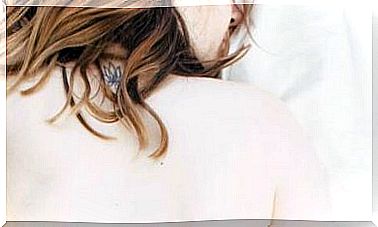Spaces That Heal: The Light And Sounds We Need
Noise and light pollution alter our natural cycles of wakefulness and rest. They stress our bodies and cause harmful hormonal and metabolic changes.

Noise has become so everyday that we have already integrated it as part of the soundscape, just like constant lighting, day and night. But it is neither “normal” nor our body is prepared to tolerate them: they affect health and a lot.
One in five people in Europe is exposed to traffic noise above the 55 dB limit established as safe by the World Health Organization (WHO). Associated diseases are stress, sleep disorders, behavioral disturbances, hypertension, and heart disease. And the noise could also be related to diabetes and obesity.
Noise and light, the lesser known pollution
They are not minor disorders: it is estimated that diseases derived from noise pollution cause 72,000 annual hospitalizations and 16,600 premature deaths, according to data collected by the Institute for Global Health (ISG), a center promoted by “la Caixa”.
The WHO already classifies traffic noise as the second most damaging environmental factor in Europe, only behind air pollution.
Reaction to waves
It is hard to believe that an invisible phenomenon like sound has such palpable effects on the human body. How are they produced?
- The sound waves cause vibrations in the bones of the ear, which transmit movement to the cochlea.
- The cochlea converts physical vibrations into electrical signals that the brain receives. And the body reacts powerfully to these signals, even in deep sleep.
Neurophysiological research suggests that noises first activate the amygdala, associated with memory and emotion formation. Its activation produces an immediate release of stressor hormones, such as cortisol.
People who live in noisy environments often have high levels of stressor hormones. This effect is related to an increase in blood pressure and other alterations in the body.
24 hour light, a health problem
The increase in artificial light in cities has altered the levels of natural light in the environment and has extended human activity to the hours that used to be total darkness. It is estimated that more than 80% of the world’s population and 99% of the inhabitants of Europe and the United States live under lightly polluted skies.
One fifth of the planet is overexposed to artificial light. This has consequences in the lifestyle, focused on permanent activity and productivity, a constant state of wakefulness and alertness, with direct psychological effects such as insomnia, anxiety and stress. But the most worrying thing is that it alters our circadian cycles.
Is light a carcinogenic factor?
The International Agency for Research on Cancer (IARC, in English) categorized night work involving alteration of the circadian cycle as a “probable human carcinogen” in 2007 , based on animal experimentation studies and evidence from epidemiological studies in humans, referred to breast and prostate cancer.
The night work involves being in the presence of artificial light at night. This disturbance in the daily “natural” light / dark cycle is responsible for the dysfunction of the circadian system, as well as the rate of secretion of melatonin, a hormone secreted by the pineal gland during the hours of darkness that is responsible for synchronizing our clock biological.
How to regulate natural melatonin
This hormone informs the light / dark cycle and, therefore, prepares our body to go to sleep, giving rise to a series of physiological responses that regulate different functions during the night, such as body temperature, blood pressure, secretion. digestive enzymes or hormone production.
In addition, melatonin has antitumor, neuroprotective, immune response regulator, anti-inflammatory and antioxidant activity.
The exposure to natural light is key to the production of melatonin is balanced and meets its multiple functions in the body.
A natural way to regulate the production of melatonin is:
- Exposing during the ma ñ ana to sunlight and artificial light, ideally from the sun or, alternatively, light source containing blue spectrum to synchronize our biological clock and our body understand that it is time to be awake and active. A good way is, for example, to walk or bike to work.
- As night approaches, it is advisable to reduce exposure, especially to light with a blue component, so that our body understands that bedtime is approaching and begins to produce melatonin. The most recommended type of light is warm or orange in color, since it does not affect the production of melatonin so markedly.
- It is very important to avoid exposure or n to white LED lights emitted by devices such as mobile phones or tablets about 3 hours before bedtime, or reduce this exposure by activating screen filters or night vision mode.
- During the hours of sleep ñ or it is advisable to keep the room he or completely n dark. For this we can help ourselves with the curtains and blinds.
Circadian cycle desynchronization
The exposure to artificial light night results:
- Desynchronization of the central clock with the environment and with the peripheral clocks.
- It causes a suppression of melatonin secretion, with which its antitumor effects are lost and, as a consequence, the cell cycle is altered.
- The quality of sleep worsens.
- Increase stress and fatigue
- Lowers immunity.
- Metabolic disorders, including obesity, are favored .
Some studies link artificial light to some cancers
The IARC study looked at occupational factors (day-night shift) rather than environmental factors. Recently, ISG researchers wanted to go further in this study and discover the effects of artificial lighting at night on city dwellers
The question that was asked was whether artificial lighting affected the alteration of circadian rhythms, hormones and the risk of developing hormone-dependent cancers, such as breast and prostate cancers, in people who respected the natural cycles of sleep and wakefulness. The answer is a resounding yes.
The research has been carried out within the framework of the MCC-Spain project, and has had medical and epidemiological data from more than 4,000 people between 20 and 85 years of age, from eleven autonomous communities. The information on nocturnal exposure to artificial light inside was gathered through personal interviews, and levels of outside light, the only cities that get nighttime images taken by astronauts of the Space Station could be evaluated in Madrid and Barcelona International.
In the results obtained in both cities, it was observed that the participants exposed to higher levels of “blue light” had between 1.5 and 2 times greater risk of developing breast and prostate cancer, respectively, compared to the less exposed population.
Ariadna García Sáenz, ISGlobal researcher and first author of the study, affirms that, at this point, “additional studies must be carried out that allow more individual data to be available, using, for example , light sensors to measure light levels in interior spaces. . it would also be important to conduct this research in young people using widely screens that emit light blue spectrum. “
The troublesome LED lights
The effects of this constant lighting are profound, especially since public lighting systems opt for white LED lights that emit a spectrum of blue light, the same as the screens of mobiles, tablets, computers … But why is it especially is this kind of light harmful?
In the 1990s, scientists discovered a third type of light-sensitive cell in the human eye, distinct from the familiar rods and rods. This third type of cell contains a type of photopigment called melanopsin, whose function is to identify the day / night cycle and, therefore, controls the production of melatonin, along with retinal photoreceptors (rods and cones).
Melanopsin shows a higher sensitivity to light with a higher component of the blue spectrum, present in sunlight, and also in cold white LED lights, which are currently on the rise due to their high energy efficiency.
New habits
Faced with this scenario, the temptation is to go live in the country, but it is not a solution available to everyone … Yes we can:
- Use less computer, mobile and tablet screens, which emit blue spectrum light.
- Take common sense measures regarding noise, such as locating the bedrooms and study area in the quietest area of the house.
- The rest depends on public policies that concern issues such as traffic or public lighting.
In this sense, urban planning is key. Designing cities and their facilities taking these factors into account is the best possible preventive measure. The first step, then, is to become aware of and demand adequate public policies.
The aforementioned studies linking noise and invasive light to cancer and other diseases are undoubtedly a powerful tool to get down to business.









